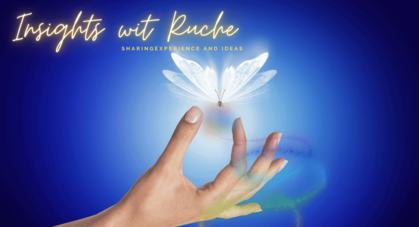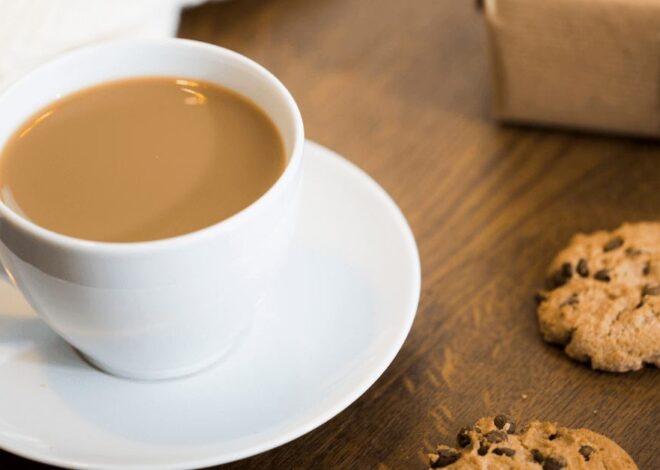
Darjeeling Tea: “The Champagne of Teas”
Have you ever wondered why Darjeeling tea is so popular? This fragrant, golden-hued tea from the Himalayan foothills has captured hearts across the globe, not just for its taste, but for the story it tells with every sip. Whether you are a tea enthusiast or simply curious about Indian tea culture, this post will walk you through the magic that makes Darjeeling tea so special.
What Makes Darjeeling Tea So Unique?
Darjeeling tea isn’t just another beverage; it is a handcrafted experience rooted in nature, tradition, and time-honoured care. Here is the story behind India’s most celebrated brew and the rare soil-born sophistication that sets it apart.
The Himalayan Terroir: Darjeeling tea is grown at elevations ranging from 600 to 2,000 meters in the Eastern Himalayas. The cool climate, misty mornings, and mineral-rich soil slow down leaf growth, allowing complex flavors to develop. This unique natural setting gives Darjeeling tea its delicate aroma and layered taste, something no other region can replicate.
Flavour that Speaks: The most famous note in Darjeeling tea is its muscatel flavor, a fruity, floral, slightly spicy profile often compared to muscat grapes. Darjeeling tea’s flavor profile transforms gracefully with each seasonal flush, offering a distinct sensory journey throughout the year:
-
- First Flush (Spring): Harvested from March to April, this is the earliest and most delicate of the flushes. The leaves are tender and lightly oxidized, producing a pale golden liquor with floral aromas and a crisp, slightly astringent taste. It is often described as fresh, lively, and ethereal, perfect for those who enjoy subtlety and brightness.
- Second Flush (Summer): Picked between May and June, this flush is the crown jewel of Darjeeling teas. The warmer weather and mature leaves result in a darker brew with a fuller body and the prized muscatel flavor, an aromatic, fruity-spicy note reminiscent of grapes and honey. It is bold yet refined, ideal for afternoon sipping.
- Autumnal Flush: Gathered from late September to November, these flush yields teas that are smooth, mellow, and comforting. The flavor is less brisk and muscatel than earlier flushes, leaning toward warm, earthy tones with a rounded mouthfeel. It is a cozy choice for cooler days, offering gentle richness without sharpness.
Each flush reflects the rhythm of the Himalayan seasons, making Darjeeling tea not just a beverage but a celebration of nature’s changing moods.
Limited Production and Protected Status: Only tea grown in the 87 certified gardens of Darjeeling can legally be called “Darjeeling tea.” It holds a Geographical Indication (GI) tag, which protects its authenticity and ensures quality. Because of its limited production and high demand, Darjeeling tea is often referred to as the “Champagne of Teas.”
Colonial Legacy and Global Prestige: Introduced by the British in the 1800s, Darjeeling tea quickly became a luxury item in Europe. Its reputation for elegance and refinement has endured, making it a staple in high tea ceremonies and gourmet kitchens worldwide.
Cultural Symbolism and Emotional Connection: In India, Darjeeling tea is more than a drink. It is a symbol of hospitality, pride, and tradition. It is often served during festivals, family gatherings, and quiet moments of reflection. For many, it evokes memories of misty mornings, warm conversations, and the comfort of home.
How Is Darjeeling Tea Made?
Darjeeling tea is crafted through a meticulous, artisanal process that honors both tradition and terroir. It begins with hand-plucking, where only the top two leaves and a tender bud are selected, typically in the early morning when the leaves are freshest. This selective harvesting ensures optimal flavor and aroma, preserving the leaf’s integrity.
Withering follows, where the leaves are spread out to lose moisture and become pliable. This step is crucial for developing the tea’s signature fragrance. Next comes rolling, either by hand or machine, which gently bruises the leaves to release their natural enzymes and essential oils. This initiates oxidation, the process that determines whether the tea becomes black, oolong, or green.
After oxidation, the leaves are fired or dried to halt further chemical changes and lock in flavor. Finally, the tea is sorted and graded, ensuring consistency in leaf size and quality. Throughout, the high-altitude climate, cool mist, and skilled craftsmanship of Darjeeling’s tea gardens contribute to the brew’s delicate body, layered taste, and aromatic complexity, making it a true celebration of nature and nurture.
Why is Darjeeling tea called the “Champagne of Teas“?
Darjeeling tea earns its title as the “Champagne of Teas” due to its exquisite rarity, nuanced flavor, and prestigious origin. Grown in the misty Himalayan foothills of West Bengal at altitudes ranging from 600 to 2,000 meters, the tea develops a unique muscatel character, an aromatic, fruity-spicy note that tea lovers treasure. This flavor is a result of the region’s cool climate, rich soil, and traditional cultivation methods, including hand-plucking of only the finest two leaves and a bud.
Production is strictly limited, with only teas grown in the 87 certified gardens of Darjeeling allowed to bear the name. Much like Champagne, it enjoys a protected geographical indication (GI) status, reinforcing its authenticity and exclusivity. The seasonal flushes, especially the second flush, are highly sought after for their depth and complexity. With its delicate body, floral aroma, and layered taste, Darjeeling tea is not just a beverage but a sensory experience, celebrated globally as a symbol of refinement and heritage.
Is Darjeeling tea Black or Green?
Darjeeling tea is predominantly known as a Darjeeling Black tea, especially the iconic second flush with its muscatel notes. However, the region also produces Green, White, and Oolong teas, all crafted from the same Camellia sinensis plant. The difference lies in how the leaves are processed. Darjeeling black tea undergoes full oxidation, while Darjeeling green tea is minimally oxidized to retain its grassy freshness. Darjeeling white tea, made from young buds, is the least processed and prized for its delicate flavor. Darjeeling Oolong tea strikes a balance between green and black, offering floral and fruity undertones. Each variety reflects the origin of Darjeeling in its own unique way.
- Darjeeling Black Tea: Often dubbed the “Champagne of Teas,” Darjeeling Black Tea is prized for its delicate muscatel flavor and floral aroma. Grown in the misty Himalayan foothills, its leaves undergo full oxidation, giving the brew a rich amber hue. Each sip offers a layered taste, light, brisk, and subtly sweet. Ideal for afternoon indulgence, it pairs beautifully with light snacks and serene moments.
- Darjeeling Green Tea: Darjeeling Green Tea is a refreshing twist on tradition, offering a mellow, grassy profile with hints of sweet vegetal notes. Unlike its black counterpart, the leaves are minimally processed to retain antioxidants and natural freshness. The pale golden liquor is soothing and gentle on the palate. Perfect for wellness seekers, it’s a calming companion to yoga, meditation, or a mindful morning.
- Darjeeling Oolong Tea: Darjeeling Oolong Tea strikes a graceful balance between black and green teas, with partial oxidation that unlocks floral, fruity, and nutty undertones. Its curled leaves unfurl into a golden infusion that’s smooth and aromatic. This tea is a connoisseur’s delight, complex yet comforting. Sip it slowly to savor its evolving character with every steep.
- Darjeeling White Tea: Darjeeling White Tea is the rarest and most delicate of all Darjeeling varieties, made from the youngest buds and minimally processed to preserve its natural purity. Its pale golden liquor offers a subtle, sweet flavor with hints of honeysuckle, melon, and fresh hay. Grown at high altitudes, the tea captures the essence of its pristine Himalayan environment. With low caffeine and high antioxidant content, it is a gentle choice for mindful sipping. Tea lovers treasure it for its elegance, rarity, and ethereal aroma.
What is the best time to drink Darjeeling tea?
The best time to enjoy Darjeeling tea is in the morning or early afternoon, when its delicate character can truly shine. Unlike heavier teas, Darjeeling has a light body and nuanced floral, fruity, or muscatel notes that are best appreciated when your palate is fresh. Starting your day with a first flush of Darjeeling offers a gentle lift. Its briskness and subtle aroma awaken the senses without overwhelming them.
In the early afternoon, a cup of second flush Darjeeling makes for a refined pause, especially when paired with light snacks or a quiet moment of reflection. Its moderate caffeine content provides a mild energy boost without the jitters, making it ideal for those seeking clarity and calm.
Avoid drinking it late in the evening, as its stimulating properties may interfere with sleep. Darjeeling is less about boldness and more about elegance, best savored when you can truly appreciate its layered complexity.
Darjeeling Tea Benefits:
Darjeeling tea, often celebrated for its exquisite flavor and aroma, is also enjoyed by many for its potential health benefits. It contains antioxidants and essential nutrients, which some believe may support overall wellness, such as immunity or digestion. Whether you prefer black, green, or oolong varieties, each cup offers a gentle dose of vitality for those who seek it.
Health Benefits of Darjeeling Tea:
-
- Contains Antioxidants: Darjeeling tea contains antioxidants, which are thought to help fight free radicals and may reduce oxidative stress.
- Boosts Immunity: Its natural compounds support a stronger immune system and promote better digestion.
- Aids Digestion and Promotes Weight Management: Green and oolong varieties are known to boost metabolism, supporting weight management.
- May Support Heart Health: Regular consumption may support heart health by improving circulation and regulating blood pressure, although individual results can vary.
- Enhances Mental Alertness: The moderate caffeine content might enhances mental alertness without causing jitters.
- Reduces Inflammation and Improves Skin Health: Polyphenols in the tea may help reduce inflammation and contribute to clearer, healthier skin.
- Lowers Stress Levels: The soothing aroma and presence of theanine may lower stress levels and promote relaxation.
- Regulates Blood Sugar: Darjeeling tea may assist in maintaining balanced blood sugar levels.
Final Thoughts:
So, why is Darjeeling tea so popular and deserves a Spot in Your Cupboard? It is the harmony of nature, craftsmanship, and culture. From its muscatel flavor to its seasonal flushes and handpicked care, Darjeeling tea offers more than refreshment; it offers a story. Whether you are exploring Indian tea gardens or simply brewing a cup at home, this tea invites you to slow down and savor life.



